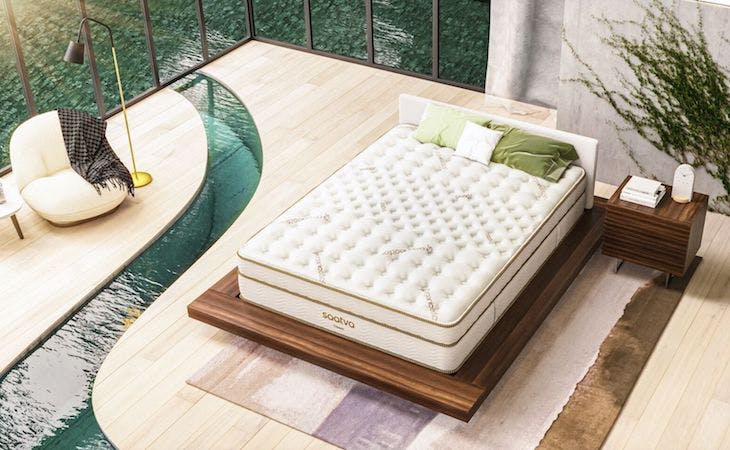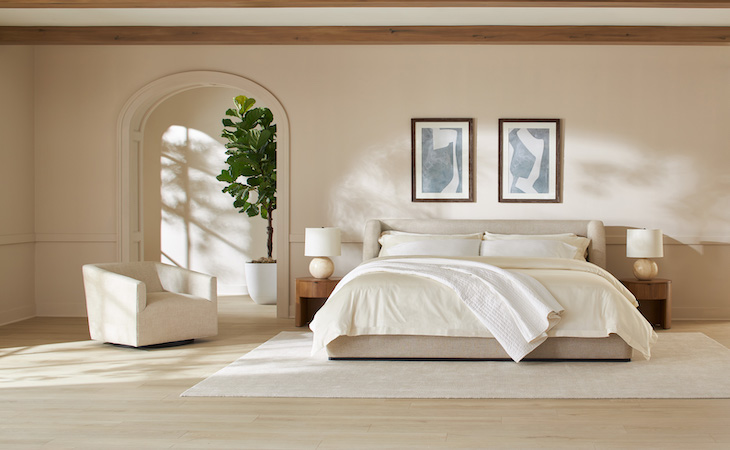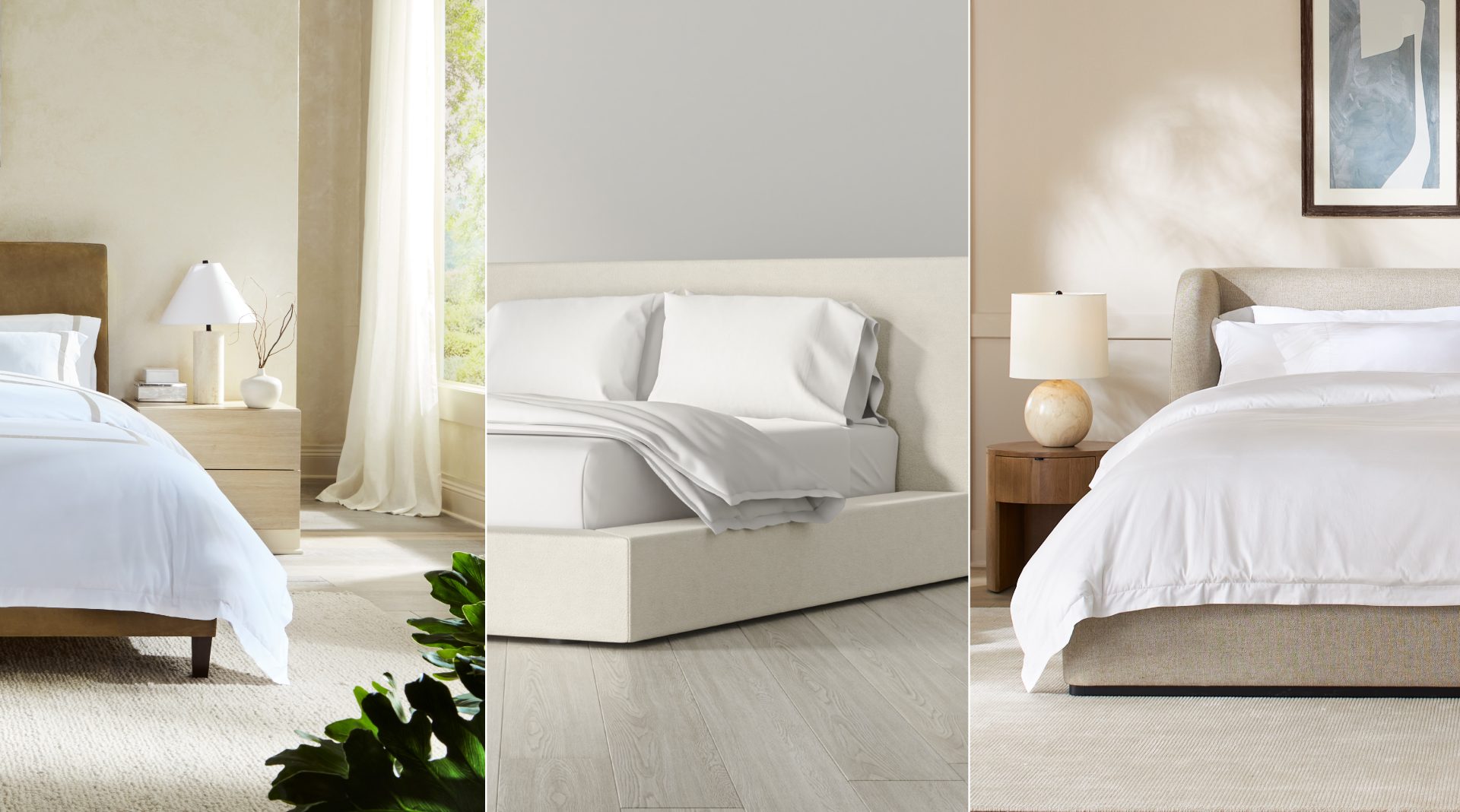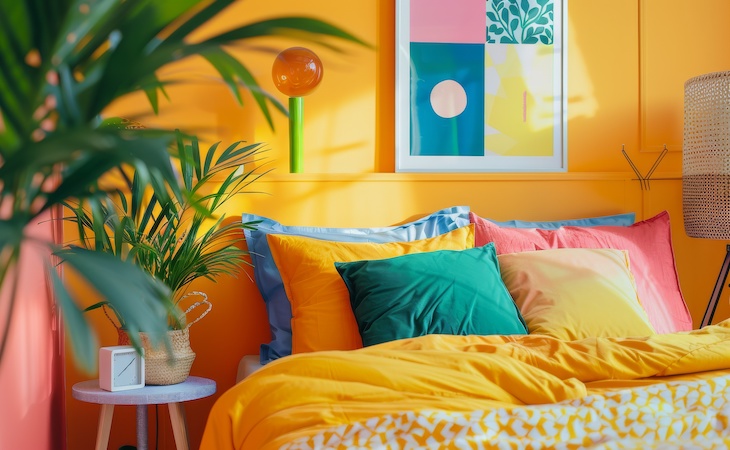New interior design trends pop up every year. While some fade as soon as the season changes, others continue to have staying power for decades to come.
Currently, the trend gurus at Pinterest are reporting that a design approach called “Japandi” is going to be big throughout 2021—and by the looks of it, it’s not going anywhere for a while.
A fusion between Japanese design and Scandinavian minimalism, Japandi interior design is known for its sleek lines and neutral color schemes, creating interior spaces that are calm and relaxing. In fact, it’s an ideal aesthetic to bring into a bedroom because it encourages peaceful vibes.
Below, learn how to incorporate Japandi style into your bedroom. You just may experience improved sleep before you know it!
What is Japandi?
Japandi design brings together the austere, stylish minimalism of Scandinavia with Japanese wabi-sabi (the art of finding beauty in imperfection), resulting in the blended term “Japandi.”
“I believe the Japandi trend will grow this year as people are spending more time at home and want their homes to feel serene and harmonious,” says Tatiana Machado-Rosas, design department head and senior interior designer for California’s Jackson Design and Remodeling.
Since Japandi design is rooted in minimalism, the approach is all about carefully selected artistic pieces. “Each item has a singular purpose, low to the ground to symbolize the connection of people and earth,” Machado-Rosas says. “Quality and not quantity is key.”
It’s a style that finds beauty and functionality in comforting, tranquil spaces created with clean-lined furniture and accessories made from natural materials, explains Machado-Rosas.
Japandi is a perfect fit for anyone who strives to live life as a minimalist. It has a decidedly uncluttered feel—but it also presents itself as warm and cozy “due to the use of natural materials, unfinished wood being one of the most prominent,” Machado-Rosas says.
Related: 8 ways to design your bedroom for better sleep
Japandi bedroom design tips
As it turns out, Japandi style and bedrooms go seamlessly hand in hand. “Japandi style is elegant, soft, and comfortable—ideal characteristics for a bedroom,” Machado-Rosas says. “The style creates a feeling of peace.”
Here’s how to incorporate Japandi principles into your bedroom.
Colors
Machado-Rosas says that when it comes to crafting a tranquil bedroom, colors and materials are important because they can easily influence your mood. This is where to start when creating a Japandi bedroom.
“Japandi uses neutral and warm tones, or sometimes cooler hues and pastels, that encourage rest,” says Machado-Rosas. So be sure to work in pale, soothing shades like gray, tan, brown, green, cream, and other hues drawn from nature.
Related: The best and worst bedroom colors, according to science
Textures
In addition to the color palette, pay careful attention to the textures within your bedroom, especially around linens. Choose natural, textured fabrics that will add warm coziness to a space, such as wool, linen, and cotton. Try these

Crisp and cool percale cotton sheets with a luxe matte finish
or

Airy and elegant linen sheets with a relaxed look
Clean visuals
Also, be sure to be on top of your organizing game if you’re striving for a Japandi bedroom. Japandi and messy are two things that never go together. “The sense of uncluttered order promotes relaxation and a better night’s sleep,” Machado-Rosas notes.
Artful, yet functional, storage pieces and handwoven baskets are essential when achieving effective organization in your Japandi bedroom.
Related: A KonMari expert shares her secrets
Furniture and décor
Since one key aspect of Japandi design is creating a connection to the earth, keep your bedroom furniture low to the ground. Think nightstands that rest just below the top of your mattress and dressers with low or no legs.
You’ll want to subtly dress up those furniture pieces, so Machado-Rosas suggests selecting “just a few” beautiful, well-crafted accessories made from natural materials with clean lines to punctuate the space.
Lastly, don’t forget to include one or two pieces of greenery that provide a nod to nature. (These are the best plants to have in your bedroom.)
Main aspects of Japandi design
To summarize, Machado-Rosas lists the top tentpoles of Japandi interior design:
- Minimalism and clean design
- Serenity and harmonious spaces
- Artistic simplicity and elegance
- Rooted in functionality
- Appreciation of good craftsmanship
- Use of natural and raw materials
- Wabi-sabi: appreciating the beauty of imperfection in nature
“Because of the enduringly popular design elements that create Japandi style, I would say Japandi is a timeless style that is here to stay,” says Machado-Rosas.
Want to boost your wellness and get a better night’s sleep? Make your bedroom a healthier, more relaxing space with these wellness design tips.




